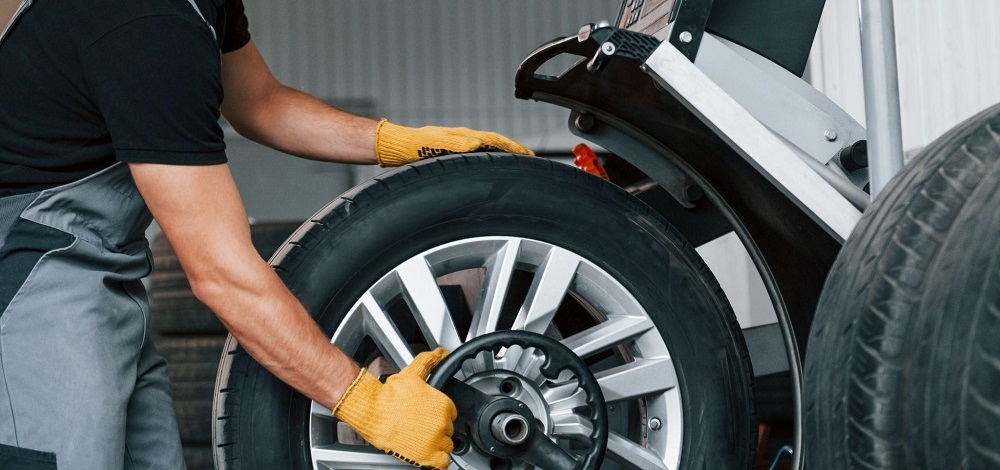Tire Fixing Myths Debunked: Separating Fact From Fiction
In the world of auto upkeep, tire fixing holds a significant area, yet it is commonly shrouded in misconceptions and mistaken beliefs that can lead to complication for car proprietors (tire tracks morris il). From the misunderstandings surrounding patching versus plugging a punctured tire to the efficiency of numerous tire sealants, there are numerous vital areas where clarity is needed to make enlightened choices.
Common Tire Repair Work Misconceptions
Dispelling common mistaken beliefs bordering tire fixing is essential for preserving roadway security and prolonging the longevity of your car's tires. One common misconception is the belief that a punctured tire is beyond fixing and has to be replaced completely. Actually, several leaks can be successfully fixed by a professional, adhering to industry standards. It is vital to recognize that not all slits are developed equal; while some may without a doubt call for a tire substitute, the majority can be securely fixed.
One more mistaken belief is the concept that a DIY tire repair work kit is an adequate solution for all tire problems. While these sets can be convenient for short-term repairs in emergencies, they are not an irreversible solution and might not deal with the underlying issue (morris tire service). Looking for the experience of a certified tire specialist is always recommended to guarantee the safety and honesty of the tire

Can You Fix a Punctured Tire?
Fixing a pierced tire is an usual method in the auto industry, frequently lugged out by expert specialists following details standards and requirements. Leaks found on the walk location of the tire are typically repairable as long as they are within a specific dimension limitation and do not impact the tire's structural integrity.
It is vital to keep in mind that pierces near the sidewall or shoulder of the tire are typically not repairable due to safety problems. Such locations go through considerable tension and flexing, making repairs unstable and possibly hazardous. Furthermore, if the leak is as well big, surpassing the recommended repairable dimension, or if the tire reveals signs of inner damage, it is safer to change the tire entirely.
The Fact Regarding Patching Vs. Plugging
When thinking about the repair work of a punctured tire, understanding the distinctions between patching and connecting is crucial for making informed choices pertaining to tire upkeep and security. Patching includes fixing the tire from the inside, where a spot is put on cover the puncture. This technique is considered even more dependable and durable as it deals with the damages inside, decreasing the threat of air leakage and additional tire damages. On the other hand, plugging is a fast fix that includes putting a rubber link into the pierced area from the outside. While connecting is convenient and can be done without eliminating the tire from the rim, it is normally thought about a temporary remedy and may not supply the same degree of durability as a spot.
Myth: All Tire Sealers Are Effective

When choosing a tire sealant, think about elements such as the dimension of YOURURL.com slits it can successfully fix, compatibility with tire pressure tracking systems (TPMS), and whether it is safe for the tire material. Bear in mind, while tire sealers can be helpful in emergency situations, they are not an alternative for appropriate tire treatment and maintenance.
Ideal Practices for Handling Flat Tires
Taking into account the varying efficiency of tire sealants, comprehending ideal practices for taking care of blowouts is crucial for maintaining roadway security and automobile performance. When encountering a puncture, the very first step is to securely draw over to the side of the road, away from approaching website traffic. Switch on danger lights to alert various other vehicle drivers of your circumstance. It is suggested to use the parking brake and area wheel wedges under the tires to avoid the car from rolling. Next off, consult your lorry's guidebook to locate the spare tire, jack, and lug wrench. Prior to trying to change the tire, ensure that the location is flat and stable. Loosen up the lug nuts, raise the vehicle with the jack, eliminate the lug nuts and level tire, and replace it with the extra tire. Tighten the lug nuts in a celebrity pattern, lower the car, and firmly tighten the lug nuts. Ultimately, store away the level tire, tools, and devices, and bear in mind to check the extra tire's stress regularly. Adhering to these best practices can help you deal with flat tires effectively and securely.
Conclusion
In final thought, it is essential her response to separate reality from fiction when it concerns tire repair service myths. Comprehending the truth concerning covering vs. plugging, the efficiency of tire sealers, and finest methods for managing blowouts can aid make sure the security and durability of your check my source tires. By debunking typical false impressions and adhering to appropriate repair service standards, you can make informed decisions when it comes to preserving the wellness of your automobile's tires.